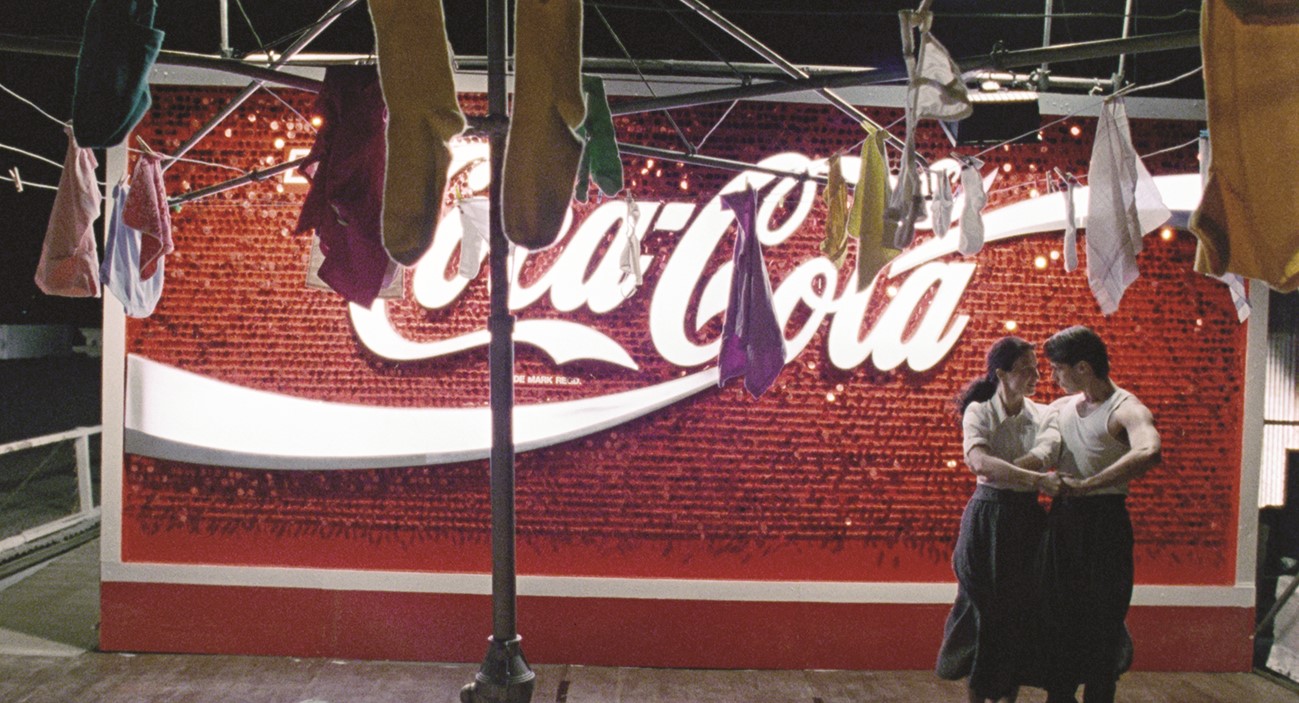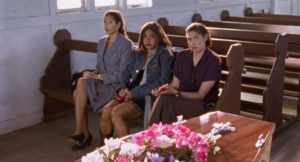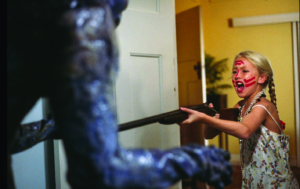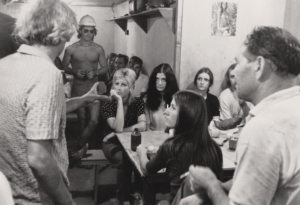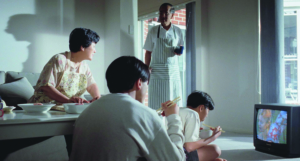THE NFSA RESTORES COLLECTION: PART 58
As Elvis (Baz Luhrmann, 2022) commands screens around the world, inviting wide ranging critical attention,[1]For more on Elvis, see Greta Parry’s article ‘A Little Less Conversation: The Convenient Omissions of Baz Luhrmann’s Elvis’ in this issue of Metro, pp. 24–9. it’s an opportune time to revisit its director’s debut feature, Strictly Ballroom (Luhrmann, 1992),which was restored by the National Film and Sound Archive of Australia to mark the film’s thirtieth anniversary in May.[2]See ‘NFSA Restores: Strictly Ballroom’, National Film and Sound Archive of Australia website, 10 May 2022, <https://www.nfsa.gov.au/latest/nfsa-restores-strictly-ballroom-2022-cannes-film-festival>, accessed 31 August 2022. This was the film that both made Luhrmann’s name and anticipated the direction that the rest of his career would follow, if not always to the same acclaim.
The film’s origins lie in its director’s own creative past. During and after his time as a student at Australia’s National Institute of Dramatic Art (NIDA), Luhrmann acquired experience in theatre and opera as well as youthful success in competitive ballroom dancing. With this latter achievement and context behind him, in 1984 he and a group of his fellow students set about devising a thirty-minute play that came to be called Strictly Ballroom.[3]For more information on the play, including some archival photographs, see ‘Strictly Ballroom’, Catherine McClements fan website, <https://www.sites.google.com/site/catherinemcclementsau/filmography/theatre/strictly-ballroom>, accessed 31 August 2022. This involved its cast members answering a series of questions that revealed their attitudes to the world at large and their impression of the conflict between tradition and change, an issue that would also prove to be at the heart of the 1992 film of the same name.
The play, in further-developed format, proved a hit at the International Festival of Theatre Academies in Bratislava in 1986, winning awards for best direction and production, and enjoyed further success back home in Brisbane and Sydney. By this time, Luhrmann was sufficiently well thought of for the producers of the M & A Film Corporation to solicit his interest in making a full-length feature-film interpretation of Strictly Ballroom, which finally came to pass after a screenplay by Luhrmann and Craig Pearce – who had also worked on the play – was presented. The screenplay would go through many subsequent redrafts until, as Pam Cook writes in her detailed account of the film’s production history, ‘psychological realism was jettisoned’ in its final version, ‘and the exhibitionist style of what would become Red Curtain cinema took centre stage’.[4]Pam Cook, Baz Luhrmann, Palgrave MacMillan, London, 2010, p. 39. Much revision also occurred over the course of several months of dance rehearsals under the direction of choreographer John O’Connell, who worked particularly closely with Paul Mercurio, a member of the Sydney Dance Company who had been cast in the leading role of Scott Hastings.
A budget of A$3 million was fairly demanding, and efforts to attract overseas assistance proved fruitless. In the event, Strictly Ballroom was financed by M & A, producing their first feature film, alongside the Australian Film Finance Corporation (with additional support from the New South Wales Film & Television Office). In view of the film’s modest budget, these sources must have been gratified by the film’s subsequent box-office success. In all respects, Luhrmann’s film had an arduous production and post-production history, with the editing alone taking over four months. All in all, it would take a year for Strictly Ballroom to reach completion and receive the exhilarating invitation to be screened in the 1992 Cannes Film Festival’s Un Certain Regard section. This international premiere constituted a no-doubt-reassuring start to its release after all those months of production in Melbourne and Sydney.

Raising the curtain: Genre and style
Strictly Ballroom qualifies as a musical, of course, but it is also something of a genre hybrid. Writing about the film twenty years ago, I claimed that ‘an understanding of how Strictly Ballroom works depends on some knowledge of classical Hollywood cinema’,[5]Brian McFarlane, ‘Strictly Ballroom: Old Story, New Images’, mETAphor, issue 2, July 2002, p. 61. a mode that characteristically worked a strong overall pattern (often involving parallelisms) shaped by a certain goal or desire through a series of cause-and-effect-related events, ultimately leading to a closure likely to ensure audience satisfaction. Strictly Ballroom can be said to conform to these aspects as they more specifically relate to the musical genre, in which, for decades, viewers expected to see performers like Fred Astaire, Judy Garland or Gene Kelly in vehicles that would adhere to this format. It can also be argued that the film exhibits elements of family melodrama, with the kind of (in this case, intergenerational) conflict often associated with the genre.
More surprisingly, in both content and structural procedures, it evokes – albeit to mainly comic effect – certain aspects of the documentary film.[6]Perhaps it was my noting that the film’s producer, Tristram Miall, had an extensive background in documentary filmmaking – dating back to No Fences, No Boundaries: Walter Burley Griffin (1976), of which he was both director and screenwriter – that led me to ponder this further influence.
Whatever such influences, relating to either production background or genre ‘entanglements’ (to use a term recently cited by scholar Emma Hamilton in an essay on westerns[7]Emma Hamilton, ‘“They Like All Pictures Which Remind Them of Their Own”: The “Entangled” Development of Australian Westerns’, in Hervé Mayer & David Roche (eds), Transnationalism and Imperialism: Endurance of the Global Western Film, Indiana University Press, Bloomington, IN, 2022, p. 266.), Strictly Ballroom is, above all, a Luhrmann film. There are many other contributors to the film’s glitzy texture, but the elements of glitter, of showiness, of extravagance in matters both external and psychological, are part of the Luhrmann signature that would define – for better, or sometimes worse – all his later films. Happily, in Strictly Ballroom, the ingredients do not so much entangle as bake together in dietary exuberance. The first instalment in Luhrmann’s ‘Red Curtain’[8]A term coined by Luhrmann himself to collectively describe Strictly Ballroom, William Shakespeare’s Romeo + Juliet (1996) and Moulin Rouge! (2001), each of which begins and ends with a red theatre curtain motif. According to the director, distinctive elements of a ‘Red Curtain’ film include ‘that the audience knows how it will end when it begins’, ‘that the story is extremely thin and extremely simple’ and that ‘it is set in a heightened, created world’. Baz Luhrmann, quoted in Geoff Andrew, ‘Baz Luhrmann’, The Guardian, 7 September 2001, p. 1, <https://www.theguardian.com/film/2001/sep/07/1>, accessed 31 August 2022. trilogy is very theatrical, even over-the-top; but its setting, aspiration and style complement one another so well that the prevailing impression is one of ‘success’ rather than ‘excess’.
‘You can dance any steps you like’: Narrative and themes
At its heart, the film may be said to tackle the conflicts that can emerge between change and tradition, and between generations. These tensions begin to make themselves felt in the film’s opening episodes.
A red curtain opens on the credits to reveal what seem to be dancers in silhouette moving to the tune of Johann Strauss’ ‘The Blue Danube’ before appearing for applause at the Southern Districts Waratah Championship dancing competition, at which point a swirl of colour takes over the screen. Scott Hastings, already a youthful ballroom-dancing champion, sets the film’s plot in motion by refusing to follow the traditional steps required by the Australian Dance Federation and insisting on his own style. The episode is interspersed with commentaries offered in turn by Scott’s parents, coach and dance partner, each of whom is – in what one less-than-enthusiastic critic has described as ‘pseudo-documentary face-to-camera interviews’[9]Pat Gillespie, ‘Strictly Ballroom’, in Scott Murray (ed.), Australian Film 1978–1994, Oxford University Press, Melbourne, 1995, p. 349. – given an on-screen title, which reinforces the documentary element.
Scott’s parents, the vexed Shirley (Pat Thomson) and the somewhat hapless Doug (Barry Otto), are depicted in their living room with photos of Scott and his partner, Liz (Gia Carides). Shirley, coiffed and made up in ways no doubt intended to minimise her passing years, is outraged at the result of the dance competition, insisting that ‘everyone there really thought it was Scott’s turn’. Doug can only sit quietly during Shirley’s tirade, the importance of which clearly has much to do with her own ego. When she asks herself, ‘Did I fail him as a mother?’ it is fairly clear to the viewer and auditor that she doesn’t believe this for a moment. Much later in the film, the reason for Doug’s silence will be made clear as he recalls how Scott’s break with tradition echoed his own (failed) rebel history.
The next of these commentators is Scott’s coach, Les Kendall (Peter Whitford), who has had some shared dancing past with the ambitious Shirley, speaking directly to the camera about how Scott ‘resorted to his own flashy, crowd-pleasing steps’. Les, in his buffed-up, campy persona, no doubt knows – or thinks he knows – what crowd-pleasing entails. The third of these captioned commentators, Scott’s ambitious dance partner, Liz Holt (Gia Carides) – who has longed to triumph in the Pan-Pacific Grand Prix – tells us she had to follow Scott’s lead: ‘I had no choice.’ After the dance concludes and a rival team are announced the victors, she departs the ballroom scene with her bizarre hairdo and costume intact, later trying various ploys to get herself reinstated to achieve the success she craves.
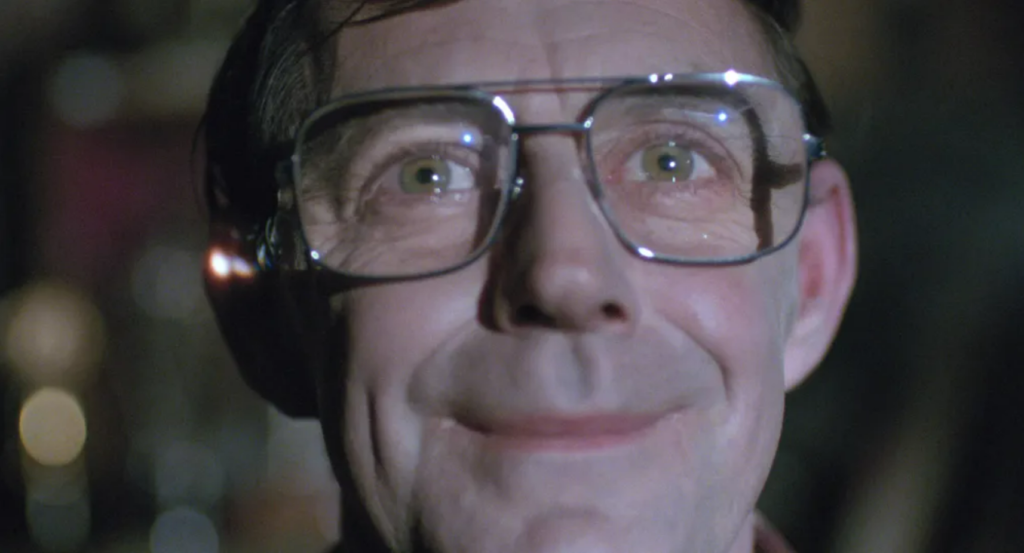
What image of Scott is being built up by these commentaries? Has his insistence on dancing his own steps been a matter of ego, of inspiration, or rather that of a young man not wishing to conform to the oppressive strictures imposed by the Dance Federation, incarnated by its authoritarian president, Barry Fife (played with flush-faced severity by Bill Hunter)? Scott is undeniably a dancer breaking with tradition, but is this a tradition so unnecessarily enforced as to explain the placement of the titular epithet ‘strictly’ before ‘ballroom’? The official attitude to Scott’s innovative approach is encapsulated by Barry, who at the climax of this sequence sums up the film’s thematic concerns: ‘Of course, you can dance any steps you like – that doesn’t mean you’ll win.’
In an interview at the time of the film’s release, Mercurio was asked: ‘How much of Scott Hastings is Paul Mercurio?’[10]Ronnie Taylor, ‘Baz Luhrmann’s Strictly Ballroom’, Cinema Papers, no. 88, May–June 1992, p. 10. The actor replied:
It wasn’t hard for me to understand Scott. He’s a little bit of a rebel trying to do his own thing, develop his own style, follow his own creative streak. It’s a good role for me. It didn’t require a total personality change. For a first film role, I’ve been very lucky.[11]Paul Mercurio, quoted in Taylor, ibid.
Perhaps this sense of part identification with Scott’s situation helps to account for the convincing complexity that Mercurio brings out in the film’s protagonist. After a close-up on Scott’s disappointed face, the film cuts to the image of Fran (Tara Morice), the comparatively ordinary-looking beginner dancer through whom Scott will not only eventually find a new partner but also learn something about a culture existing outside the world of the ballroom. At this point, the film is on the verge of what critic Tom Ryan describes as ‘a merging of the David and Goliath parable with the Cinderella fable’,[12]Tom Ryan, ‘How Strictly Ballroom and Romper Stomper Changed Us Forever’, The Sydney Morning Herald, 1 July 2022, <https://www.smh.com.au/culture/movies/strictly-ballroom-and-romper-stomper-changed-cinema-what-do-they-say-about-us-20220615-p5atyc.html>, accessed 31 August 2022. a fusion that will account for the film’s narrative manoeuvrings.
In Kendall’s Dance Studio – ‘three days later’, as a mockumentary-style subtitle announces – Shirley is dancing with Les when a distraught Liz tells her that she and Scott are no longer partners because he ‘isn’t even interested in winning at the Pan-Pacifics’. She then storms off – as do quite a number of others, following various temperamental outbursts, in the course of the film – slamming a door against the timid Fran, not deliberately but without regret.
The near-universal negative reaction to Scott’s improvisations depicted here reflects the film’s urge to applaud attempts to rebel against oppressive tradition. Liz screams at Scott that she would rather dance with his self-satisfied competitor Ken Railings (John Hannan), who clearly feels he deserves any woman’s desire to dance with him and only takes her on because his previous partner, Pam (Kerry Shrimpton), broke her legs. Doug, in daggy shorts and long white socks,[13]In film, this is almost a uniform for ineffectual nerds and other inadequates, such as David Wenham’s sleazy developer Johnny in Goldstone (Ivan Sen, 2016). eventually takes the hysterical Shirley home, leaving the viewer with an image of two very different facades – a matter the film will later account for.
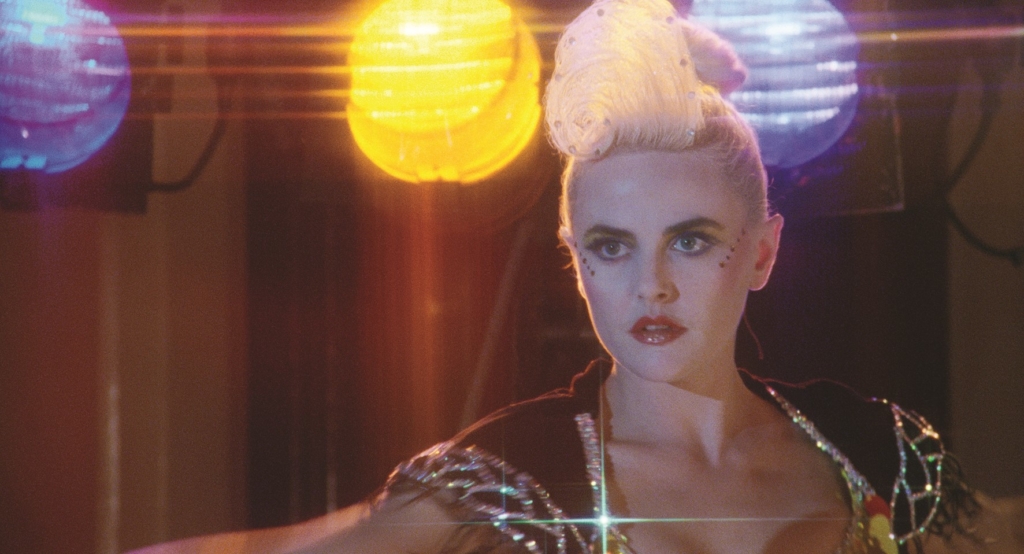
In these sequences, ballroom dancing is presented as having its share of physical as well as otherwise personal challenges. As to the latter, Scott is then seen dancing by himself and catching glimpses of himself in the mirrors: does this suggest an element of ego, or is it just a matter of responding to his creative impulses, jumping around to his own steps? As he gyrates, he is unaware that Fran is observing him discreetly from behind a door until she emerges and announces, ‘I want to dance with you, your way, at the Pan-Pacifics […] When you dance your steps, I understand how you feel, ’cause I make up my own steps too.’
Here begins the narrative’s Cinderella plot, its stops and starts embarking on a more forward-looking motion, even if that makes its progress sound more conventional than will prove to be the case. At this stage, Fran is still the ‘ugly duckling’: her plain appearance, her freckles, her glasses and her sartorial draping are all at odds with, for instance, Liz’s vividly made-up glamour, but she nonetheless possesses a ‘terrible desire’ to get her feet moving with Scott’s. Close-ups of dancing couples’ feet are among the film’s recurring images, and Fran’s and Scott’s are seen here finding what they may achieve together. She proves not to be without an inner fire, which allows her to berate him as a ‘gutless wonder’ when he puts her down. She cries; he relents; and they embark on a conciliatory rumba together, its Latin American history anticipating his later meeting with her Spanish family.
A little later, after Scott is seen with various aspirant dance partners, the scene cuts to his persevering with Fran; he shuts himself away with her as Doug arrives, sets a vinyl record playing and mysteriously proceeds to dance alone to it. Doug’s isolation stands in contrast with the growing rapport between Scott and Fran, who have taken to dancing on the rooftop over Kendall’s Dance Studio. Meanwhile, Fran’s appearance is transforming: she has removed her glasses following Scott’s query as to whether she needs them while dancing, and her complexion is also clearing; soon enough, Scott pronounces, ‘You’re ready!’ In one of the film’s rare touches of realism – far from the ‘Red Curtain’ aesthetic that colours most of the film’s episodes – Scott walks Fran to her far-from-glamorous home, attached to a modest cafe.
This meeting with Fran’s quick-tempered father, Rico (Antonio Vargas), and her more benign grandmother (Armonia Benedito) offers Scott another step away from the strictures of the Dance Federation. Rico may well be a dancer and dance teacher, but he also belongs to a culture at a remove from the glitter of the ballroom – and it is he who introduces Scott to the paso doble, the traditional Spanish dance that enables an aptly accoutred Scott and Fran to eventually move towards the success we have always expected. The old saying ‘All that glitters is not gold’ is being subjected to another cultural test.
However, just as Scott and Fran seem headed for happiness, another obstacle to this end appears in the shape of dance glamour queen Tina Sparkle (Sonia Kruger). Despite the outcry over Scott’s ‘shenanigans’, Barry expresses a desire for Scott to become Tina’s new partner. Shirley, not one for moderate responses, is rapturous when Les tells her of the plan for Scott to make a comeback with Tina, and Fran overhears and runs off. Scott runs after her, but we are allowed to wonder if he might in fact want to dance with Tina given the professional gain it might entail.
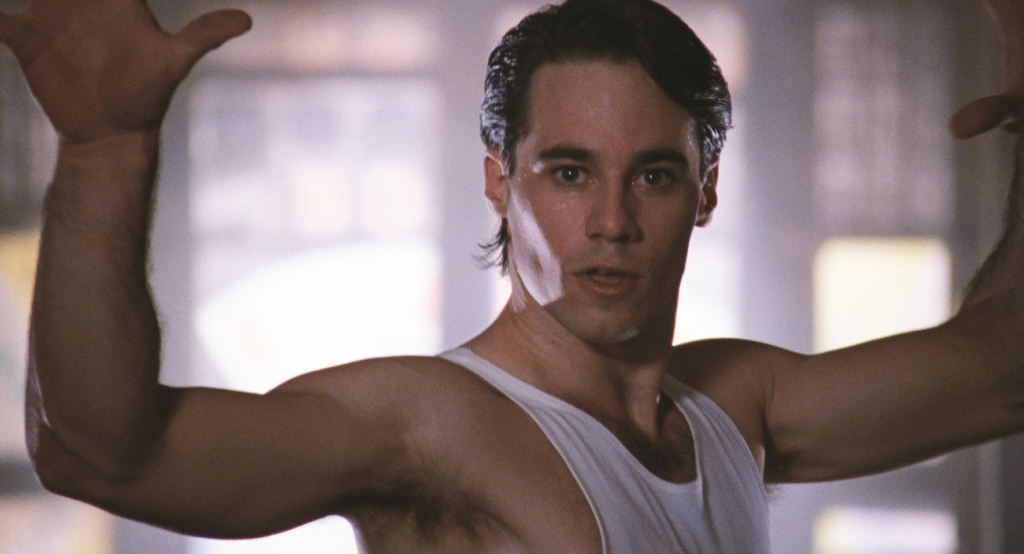
This brief interlude is further complicated when Scott finds Fran and they dance together, serious-faced, off stage against the backdrop of the red curtain that serves as an emblem for their distance from the real world. As they dance to Doris Day’s ‘Perhaps, Perhaps, Perhaps’, the lyrics – ‘If you can’t make your mind up / We’ll never get started’ – underscore the tensions of this particular moment in the film’s doings (‘plot’ seems too formulaic), just before another uncharted incident gets in the way: Fran falls over, and Shirley, with phoney solicitude, urges her to leave. She gushes about how ‘terrific’ Tina looks and, when Scott reappears, remarks to him that Fran just ‘went home’. Scott, unready to accept this lie, apologises to Tina and tells her he’s ‘not available’, adding another positive element to our understanding of his character: that ambition is one motivation for him, but far from the only one.
As Cook writes, ‘[Strictly Ballroom’s] dance numbers also operate at more than one level. They trace the development of the love story, while at the same time contributing to the layers of allusion.’[14]Cook, op. cit., p. 47. Among such allusions is the film’s ongoing preoccupation with the loosening of – and, sometimes, altogether breaking with – traditional culture. This is witnessed in Scott’s conflict with the Dance Federation that seeks to impose its rules; his mother’s rage at his following his own goals, thus leaving his partner ‘no choice’ but to walk out; and now his coming to terms, via Fran, with another culture. As they instruct him in the steps of the paso doble, Fran’s family members offer Scott a new repertoire along with an insight into how a family from a different background can operate.
As they instruct him in the steps of the paso doble, Fran’s family members offer Scott a new repertoire along with an insight into how a family from a different background can operate.
There is no suggestion of didacticism on Luhrmann’s part in communicating this progress; instead, Scott’s acceptance of embracing the new – a ‘new’ that might provide him with some way out of the conflicts of his past – is conveyed by a change of settings and, indeed, images of different sets of feet in close-up. Fran’s father and grandmother are not sentimentalised, but it is plain that she draws support from them in a manner that Scott could not have found from his own aggressively ambitious mother and ineffectual father. This scene presents not just a matter of another kind of family but of an intercultural acceptance that is at odds with the rigid prejudices of the Dance Federation.
At one point, Shirley implies that Doug has been responsible for the twenty-five years of boredom that has found relief in her attempts to manage their son’s ballroom career. There have been previous images of Doug dancing alone in the studio, but these have not adequately accounted for his generally solemn persona; as Barry reveals in a theatrical flashback to 1967, a young Doug, then good-looking and a gifted dancer, ‘had everything’ until he started to improvise and threw away ‘strictly ballroom’. Barry is not a wholly reliable narrator, but through this exposition the film is perhaps offering some explanation for Shirley’s later belligerence and desire to control Scott’s career. Behind their disparate facades, Shirley and Doug are both shown to have issues to deal with in relation to Scott’s difficulties.
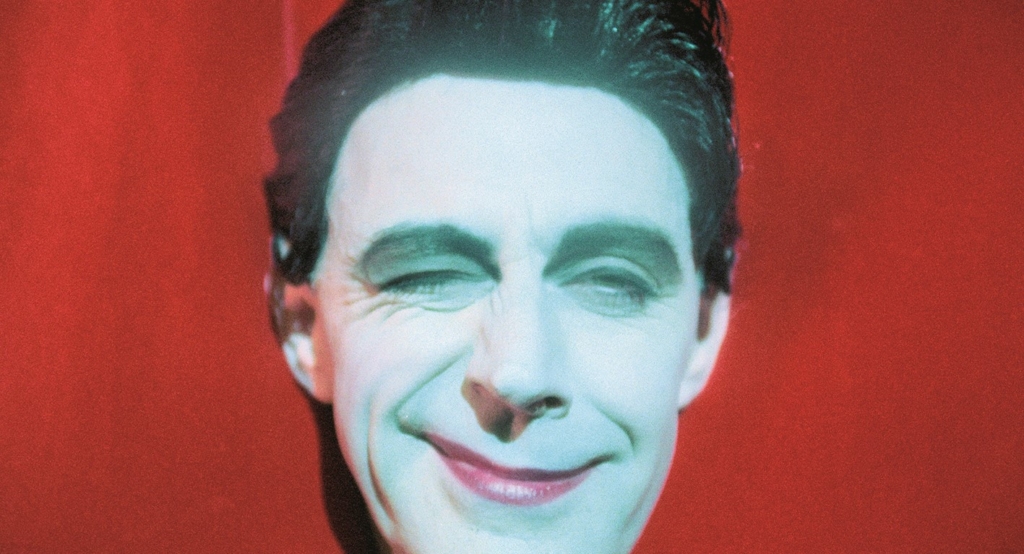
Without engaging in anything like linear realism, Luhrmann and Pearce’s screenplay again and again prompts viewers to ponder suggestive links with not just narrative connections but also an overall vision of the bewilderments of life – especially when lived in the sort of theatrical environment that may lead to an undervaluing of more basic human needs such as aspiration or affection, or of the ability to practise one’s ‘own steps’ on and off the dance floor. After dancing happily in her family’s cafe, Scott has his first kiss with Fran, a significant moment preceded by a series of alternating close-ups that speak of the acknowledgement of growing devotion and the mingling of cultures.
Back in the studio, the manipulative Barry tells Scott, ‘Doug destroyed your mother’s career.’ We are led to believe that Doug became ashamed as a result of ‘doing his own thing’ and to wonder just where our sympathies are meant to lie as the film flashes back to when Doug and Shirley were dance champions. Barry uses this bit of family backstory as an attempt to bribe Scott to dance with Liz at the Pan-Pacific Grand Prix. From the image of these reunited dance partners together, the film cuts – courtesy of Jill Bilcock’s adroit editing, one of the film’s key strengths – to Fran, appearing less showily dressed and with a female dance partner. When she leaves the floor, Scott runs after her, pushing his way down crowded corridors. This recurring motif – Scott is often shown running in the film – suggests that he is in constant search of something or someone, a further example of how Strictly Ballroom works through images rather than any more conventional series of cause-and-effect-related incidents.
After being denounced once more by Fran as a ‘gutless wonder’, Scott is confronted by his father, who reveals the truth: that Doug was in fact undermined by Barry, and never had the chance to demonstrate his steps. Abandoning Liz as their name is called by the judges, Scott runs out of the building to find Fran; they soon return to the Pan Pacific Grand Prix floor – in glittering gold jacket and red flamenco dress, respectively – to perform their paso doble routine. Just as it looks as if they are headed for a predictable moment of triumph, the choleric Barry exerts his authority and announces that Scott and Fran are suspended until further notice, ordering them off the floor and demanding that the music be cut. This silence is broken by a pair of hands slowly clapping in close-up, reminding us of the film’s many such images of feet; these belong to Doug, who, as if recalling his own failure to dance his own steps all those years ago, is clapping them back to action.
From here, the film moves predictably but warmly to an ending of reconciliation on several levels as the many other hands in the crowd join the applause. Doug, with a tear trickling down his cheek, turns to the aghast Shirley to propose, ‘Shall we dance?’ and, to the tune of John Paul Young’s ‘Love Is in the Air’, off they go, followed to the floor by Rico and Liz (just in case we’ve felt a bit sorry for her when Scott left her), Fran’s grandmother and Les (who’s taken a sock at Barry, overturning his regime), and the crowd at large.
There is a strong feel-good element here, of course, but by this stage an audience would be unlikely to expect any tragic outcome. Instead, this final sequence involves a fusion of cultures and generations, even if, as critic Pat Gillespie complains, it ‘is so over-edited that one is left feeling frustrated, not elated’ and ‘the flurry of quick cuts creates ambience, not resolution’.[15]Gillespie, op. cit., p. 349. Perhaps, but Gillespie’s following, concluding sentence – ‘One gets the impression that Scott hasn’t challenged the system sufficiently to make change’ – raises the question of whether his rebellion was merely about an individual being allowed to dance ‘his own steps’ or whether this was meant to initiate more extensive changes in the Dance Federation’s procedures. Whatever Luhrmann says about the larger thematic matters that his films invoke, reviewer Karl Quinn is right to observe that, though the director ‘has a vision’, ‘that vision is largely about how things look’.[16]Karl Quinn, ‘Baz Luhrmann Films Are All Style and No Substance’, The Sydney Morning Herald, 30 June 2022, <https://www.smh.com.au/culture/movies/baz-luhrmann-films-are-all-style-and-no-substance-20220629-p5axn9.html>, accessed 31 August 2022. Most often, how things look in Strictly Ballroom tends to say more about surfaces and individuals than about any larger issues.
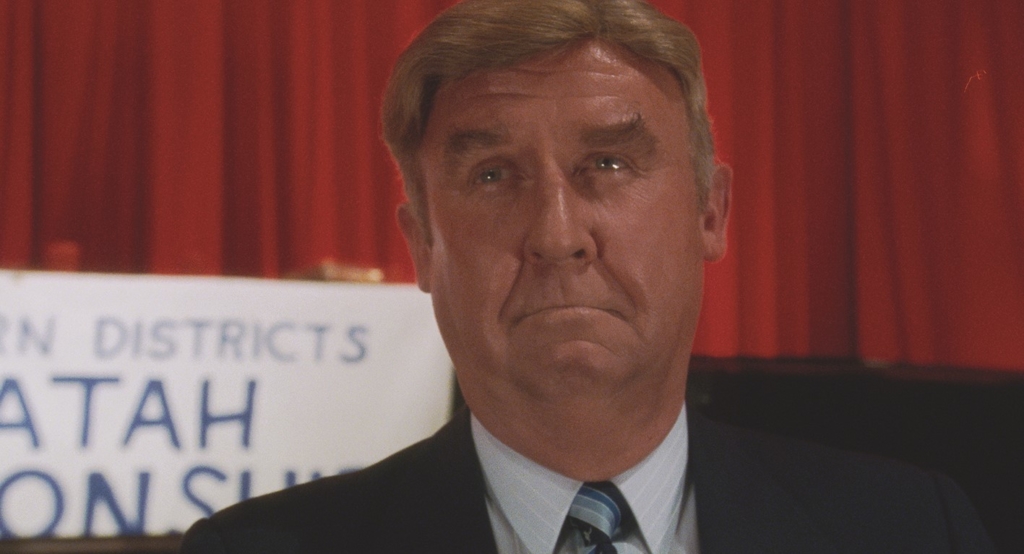
Contrasts and changes: The look and sound of Strictly Ballroom
Like most musicals of the classical Hollywood cinema, Strictly Ballroom moves – if not so straightforwardly as some – towards an ending that is characterised by both romantic closure and musical confirmation of a positive kind. As film scholar Tom O’Regan writes, ‘In the best musical tradition the prototypically utopian finale makes dance a universal condition.’[17]Tom O’Regan, Australian National Cinema, Routledge, London & New York, 1996, p. 148. Though the look of the film may be what stays most firmly in the viewer’s mind, there are other matters that contribute to its narrative texture: the overall pattern is one of youthful rebellion against formulas laid down by elders in and out of the ballroom. The film arrives at the conclusion that youth has been right to rebel, and makes this clear in the parallelism of Scott’s family situation, in which Shirley opted to stick to the rules when a younger Doug branched out, trying to do something different.
As for the look of the film, Luhrmann’s first-feature success clearly owed a great deal to several of his collaborators. This is evident in how the film’s sequences are put together in terms of their colour, frame composition, costume and settings; how its shots are edited together; and how visual contrasts are used to highlight the structural and ideological. Notice, for instance, the contrast between the vivid, glitzy world of the ballroom (a matter of colour, movement and sound as well as of editing) and the quiet, subdued colour of the romantic sequences, or of the little scene of Doug dancing on his own. As in most such films, the actual musical scenes stand out in terms of look and sound from the segments that are in more-or-less conventional narrative mode.
In Strictly Ballroom, we keep getting contrasts between the outrageous and the ordinary, the glittering and the drab. Much of the effectiveness of such contrasts can be traced to Luhrmann’s costume and production designer (and now wife) Catherine Martin. Think of the images of Liz when we first see her compared with those of the simply dressed Fran: they are contrasted through how they look, and their later behaviour reinforces this impression. Liz always looks as if she is ready for the ballroom in her coiffure and couture, whereas we are lured into watching the morphing of Fran’s costumes from unpretentious but shapeless white sacking – in tune with her colourless glasses and loose-hanging hairdo – to a later appearance on the dance floor in a pleasant but unmemorable flared floral skirt, before her final triumph in the flamenco costume with its layers of scarlet skirt. Compare this with some of, say, Tina’s outrageously spangled and strikingly revealing costumes and it becomes clear how much Martin’s and Angus Strathie’s imaginative design[18]While Martin was responsible for the street clothes in the film, Strathie designed the ballroom costumes. contributes to our sense of Fran’s development (such a change is also evident to a lesser extent in Doug’s shift from the shorts and socks of his homely, put-upon days to his black-tie command of the final ballroom scene). Throughout, the appearance of the characters is used to keep us informed about their proclivities; for instance, Scott’s emergence from singlet to glittering jacket for his final moment of triumph in the ballroom not merely underscores that success but also makes a point about intercultural acceptance.
Martin’s production design establishes the contrast between the world of the ballroom (conveyed through colour, movement and, of course, sound) and the modest setting of Fran’s family and its cafe; the romantic scene in which Fran and Scott are presented in long-shot silhouette against a dim sky with a power station to one side of the frame; and the shadowy little scene of Doug dancing on his own. And in the recurring images of someone rushing off, outraged faces (like Shirley’s or Barry’s) and, strikingly, those close-ups of dancing feet, Bilcock’s editing controls the look and the movement of the film brilliantly. Of course, it’s Steve Mason’s cinematography, under Luhrmann’s direction, that registers all these aspects of the ‘look’ of the film, which may be what most vividly makes it linger in the mind. Nevertheless, however visually memorable the film is, there is another major contribution to its sensuous impact, and that is its musical score. Under David Hirschfelder’s supervision – and also featuring his own original compositions – the film draws eclectically on pieces by such diverse names as Strauss, Georges Bizet and Frédéric Chopin; the Irish composition ‘Londonderry Air’ (as it cuts from the ballroom to Fran’s home, to some touching effect); and finally John Paul Young’s 1970s hit ‘Love Is in the Air’. As the last of these begins, it alerts us to the drama’s taking on the new life that follows Scott and Fran’s triumph, with the rest of the ballroom crowd joining ecstatically in the dance.
Strictly Ballroom opens and closes on the image of the red curtain – the signifier that later collectively applied to Luhrmann’s first three features – and it’s one that stresses the intense theatricality that underpins the film’s appearance, its sound, its action and the sorts of responses, whether of feelings or understandings, that it seeks to evoke. ‘Like the hero of Strictly Ballroom, a dancer who has to fight the “all-powerful federation” to dance his own steps his own way, Luhrmann had to fight to make Strictly Ballroom the way he knew it should be made,’ journalist Ruth Hessey observed in a 1992 interview with the director. ‘There is still a cupboard at the Strictly Ballroom production office stuffed with rejected drafts of the film.’[19]Ruth Hessey, ‘Stepping Out: Behind the Scenes of Strictly Ballroom’, Rolling Stone (Australia), no. 474, September 1992, pp. 72–75. Investigation of the film’s critical and commercial reception suggests it was a fight deservedly won.
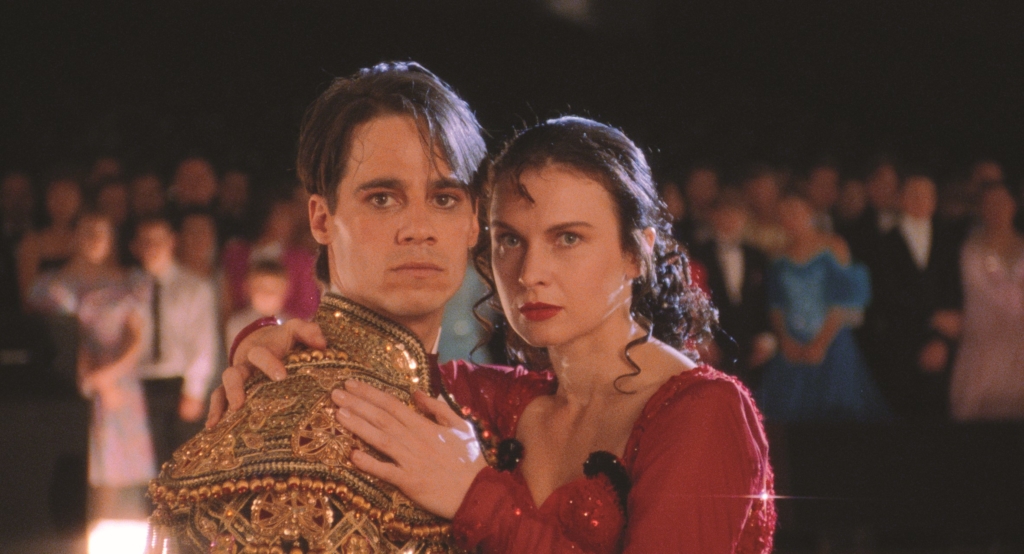
Retelling the myth: Legacy and reception
As several writers have noted, Luhrmann’s flamboyant style ushered in a new phase in Australian cinema, which had previously so often been characterised by decorous adaptations, realist dramas in urban or rural settings and rites-of-passage narratives. It could be argued that Scott’s emergence as a young man dancing to his own steps has something of the last genre to it, but the subject arguably had never been treated with such gaudiness. Paraphrasing Sunday Herald Sun reviewer Peter Castaldi’s argument, O’Regan characterised Strictly Ballroom’s immediate impact accordingly:
It was […] a forerunner to the 1994 Australian ‘hits’ Muriel’s Wedding [PJ Hogan] and The Adventures of Priscilla[,] Queen of the Desert [Stephan Elliott]. It cleared the way for these films because of the way it combined the conventional fairy tale romance with Australian suburbia, its back streets and its dreams.[20]O’Regan, op. cit., p. 148.
Luhrmann’s flamboyant style ushered in a new phase in Australian cinema, which had previously so often been characterised by decorous adaptations, realist dramas in urban or rural settings and rites-of-passage narratives.
In Castaldi’s own words, ‘Strictly Ballroom underneath its lavish frocks, its wonderful performances and crackerjack pace liberates the suburban from the grip of the realists and lets fantasy run free.’[21]Peter Castaldi, ‘Movie of the Week’, The Sunday Herald Sun, TV Extra, 23 October 1994.
The starting point for Strictly Ballroom’s commercial success occurred at the 1992 Cannes Film Festival, where, in critic Jan Epstein’s view, the film offered an example of ‘the further development of an idiosyncratic, vernacular Australian cinema – a cinema which appears especially distinct when viewed against the larger backdrop of world cinema’. Epstein’s festival report for Cinema Papers goes on to describe Strictly Ballroom as ‘a flamboyant and imaginative film, with an upbeat ending that makes people feel good [… and] has an ingenue, maverick quality about it’.[22]Jan Epstein, ‘Australian Films at Cannes’, Cinema Papers, no. 89, August 1992, p. 22.
Luhrmann himself was questioned about the style of the film at Cannes, and summarised it thus:
The ‘telling style’ is the key thing. Some people may be shocked because it uses a structure utilized by many American films. A lot of those stories are about great myths, like the David and Goliath story of a young outsider trying to overcome a repressive régime. That is a basic myth.
What’s unique to this is the way in which we’ve taken that myth and retold it.[23]Baz Luhrmann, quoted in Taylor, op. cit., p. 8.
What Luhrmann refers to as the ‘telling style’ has stayed with him – in varying modes and genres – over the rest of his filmmaking career up to the present, and was particularly evident in his next two features. The ‘Red Curtain’ label has now become associated with William Shakespeare’s Romeo + Juliet (1996) and Moulin Rouge! (2001) along with Strictly Ballroom: collectively, a trio that embodies Luhrmann’s preoccupation with style and how it crucially affects all other matters of the film’s text and viewers’ response to them. The second of these three remained utterly true to the Shakespearean text while visually reimagining it in terms of time and place; while, in 2001, I wrote an article about Moulin Rouge! in which I described the film as ‘the sort of museum that makes a virtue of wild eclecticism’, praising it for its ‘wild and whirling willingness to yoke together the classical and the popular, and to cross media divides’.[24]Brian McFarlane, ‘The Movie as Museum’, Meanjin, vol. 60, no. 4, January 2001, pp. 212–3. The kinds of genre and stylistic hybridity these films exhibit can be traced back to Strictly Ballroom, where ‘look’ and ‘meaning’ are so intricately related.
Despite these idiosyncrasies – or, perhaps, because of them – and though it had no major star names, Strictly Ballroom was a popular success both at home and abroad. After its success at Cannes, Cook reports that the film gained ‘the support of influential [American] critics’ and went on ‘to become a winner in the USA’ when it was released in that country in February 1993.[25]Cook, op. cit., p. 50. Rolling Stone critic Peter Travers lauded it thus:
Here’s another Australian gem fresh off the film-festival circuit. But this one’s an anomaly: an art-house crowd pleaser. Tyro director Baz Luhrmann whips up an entrancing entertainment by lifting clichés out of every musical from 42nd Street [Lloyd Bacon, 1933] to Dirty Dancing [Emile Ardolino, 1987].[26]Peter Travers, ‘Strictly Ballroom’, Rolling Stone, 12 February 1993, <https://www.rollingstone.com/tv-movies/tv-movie-reviews/strictly-ballroom-100470/>, accessed 31 August 2022.
In Cook’s words, the film had by this stage already been ‘a runaway critical and box-office hit in the UK following its October 1992 release’.[27]Cook, op. cit., p. 58. Philip Kemp’s review in Sight & Sound recorded how
Strictly Ballroom started out as a dance-theatre piece, and the film makes no bones about being theatrical [… but it] works in wholly cinematic terms, with fluid, sweeping camera movements mirroring the exuberance of the dance sequences; the theatricality is inherent in the subject matter.[28]Philip Kemp, ‘Strictly Ballroom’, Sight & Sound, vol. 2, no. 6, October 1992, p. 56.
This same review went on to make the point that, however much Luhrmann has insisted in interviews about the ‘David and Goliath’ myth and his thematic concern with breaking with repression, this is enacted ‘at such an elementary level that even stating it seems to give it too much emphasis’.[29]ibid. Among the critical responses to the film, this seems worth noting; as a director, Luhrmann has often given somewhat rhetorical and not wholly persuasive accounts of his intentions.
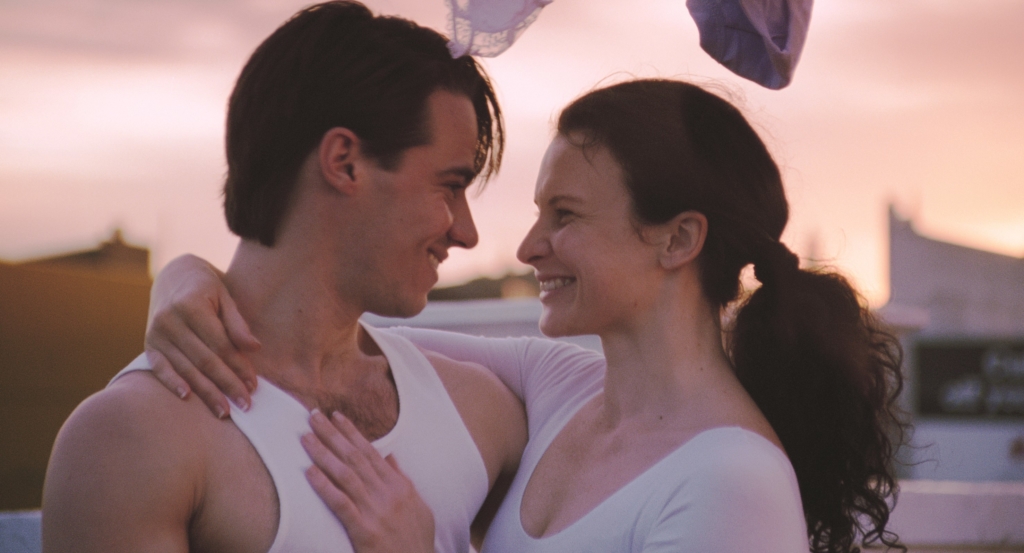
The general response in Australia was also enthusiastic, and, within six months, the film had taken almost A$18 million here. This was a surprising success for a low-budget film, and out of line with the more usual locally made productions. Following its breakout showing at Cannes, Strictly Ballroom was released in over twenty countries and was screened at eleven other international film festivals. Not many arthouse successes also manage to capture such box-office success across borders. When asked what he believed to be the source of the film’s appeal, Mercurio replied in terms that no doubt help to account for its wide-ranging success:
Ballroom crosses so many boundaries of class and culture. I think the audience base will be broad. It’s going to be great for dance, in that it has ballroom style, flamenco and contemporary dance. In that sense, it’s not strictly ballroom. And that’s the point of the film really: it’s not just about ballroom dancing, it’s a film about a set of wonderful characters, juggling with life.[30]Mercurio, quoted in Taylor, op. cit., p. 10.
Those ‘wonderful characters’ found expression in a cast that seems utterly entered into the exuberant spirit of the film. Strictly Ballroom was Mercurio’s feature-film debut, and, with his darkly handsome looks allied to his terpsichorean skills and his gifts as an actor, he creates the presence the film needs at its centre. Scott is already a likely contender to win competitions and do his own thing, whereas Fran – through Morice’s incarnation of this far-from-glittering outsider – is touching as she seeks to grapple with the demands of the ballroom-dancing profession. And these two protagonists are supported by a team of character players who make vivid impressions in their smartly conceived roles: Otto and Thomson as Scott’s parents; Hunter as the manipulative and mendacious Barry; and Whitford as dance studio owner Les, all of whom make their presences felt vividly as they move between their characters’ surfaces and what these may be concealing.
In spite of its mixed dealings with media and lives, Strictly Ballroom has not only much visual appeal but also a satisfying coherence in its imagistic and narrative procedures. It would not be easy to say that about the widely scorned Australia (2008), the wildly over-ornate The Great Gatsby (2013) or even Elvis. It will be interesting to see whether Luhrmann’s future work can return to the more modest delights of the film that made his name and launched his career.
Select bibliography
Pam Cook, Baz Luhrmann, Palgrave MacMillan, London, 2010.
Jan Epstein, ‘Australian Films at Cannes’, Cinema Papers, no. 89, August 1992, pp. 22–5.
Pat Gillespie, ‘Strictly Ballroom’, in Scott Murray (ed.), Australian Film 1978–1994, Oxford University Press, Melbourne, 1995, p. 349.
Ruth Hessey, ‘Stepping Out: Behind the Scenes of Strictly Ballroom’, Rolling Stone (Australia), no. 474, September 1992, pp. 72–75.
Brian McFarlane, ‘Strictly Ballroom: Old Story, New Images’, mETAphor, issue 2, July 2002.
Tom O’Regan, Australian National Cinema, Routledge, London & New York, 1996.
Ronnie Taylor, ‘Baz Luhrmann’s Strictly Ballroom’, Cinema Papers, no. 88, May–June 1992, pp. 6–10.
PRINCIPAL CREDITS
Year of Release 1992 Length 94 minutes Production Company M & A Film Corporation Producer Tristram Miall Director Baz Luhrmann Screenplay Baz Luhrmann & Craig Pearce (from a screenplay by Baz Luhrmann & Andrew Bovell) Director of Photography Steve Mason Editor Jill Bilcock Production Designer Catherine Martin Costume Designers Catherine Martin & Angus Strathie Choreographer John O’Connell
MAIN CAST
Scott Hastings Paul Mercurio Fran Tara Morice Barry Fife Bill Hunter Shirley Hastings Pat Thomson Liz Holt Gia Carides Les Kendall Peter Whitford Doug Hastings Barry Otto Ken Railings John Hannan Tina Sparkle Sonia Kruger Charm Leachman Kris McQuade Wayne Burns Pip Mushin Vanessa Cronin Leonie Page Rico Antonio Vargas Ya Ya Armonia Benedito
Endnotes
| 1 | For more on Elvis, see Greta Parry’s article ‘A Little Less Conversation: The Convenient Omissions of Baz Luhrmann’s Elvis’ in this issue of Metro, pp. 24–9. |
|---|---|
| 2 | See ‘NFSA Restores: Strictly Ballroom’, National Film and Sound Archive of Australia website, 10 May 2022, <https://www.nfsa.gov.au/latest/nfsa-restores-strictly-ballroom-2022-cannes-film-festival>, accessed 31 August 2022. |
| 3 | For more information on the play, including some archival photographs, see ‘Strictly Ballroom’, Catherine McClements fan website, <https://www.sites.google.com/site/catherinemcclementsau/filmography/theatre/strictly-ballroom>, accessed 31 August 2022. |
| 4 | Pam Cook, Baz Luhrmann, Palgrave MacMillan, London, 2010, p. 39. |
| 5 | Brian McFarlane, ‘Strictly Ballroom: Old Story, New Images’, mETAphor, issue 2, July 2002, p. 61. |
| 6 | Perhaps it was my noting that the film’s producer, Tristram Miall, had an extensive background in documentary filmmaking – dating back to No Fences, No Boundaries: Walter Burley Griffin (1976), of which he was both director and screenwriter – that led me to ponder this further influence. |
| 7 | Emma Hamilton, ‘“They Like All Pictures Which Remind Them of Their Own”: The “Entangled” Development of Australian Westerns’, in Hervé Mayer & David Roche (eds), Transnationalism and Imperialism: Endurance of the Global Western Film, Indiana University Press, Bloomington, IN, 2022, p. 266. |
| 8 | A term coined by Luhrmann himself to collectively describe Strictly Ballroom, William Shakespeare’s Romeo + Juliet (1996) and Moulin Rouge! (2001), each of which begins and ends with a red theatre curtain motif. According to the director, distinctive elements of a ‘Red Curtain’ film include ‘that the audience knows how it will end when it begins’, ‘that the story is extremely thin and extremely simple’ and that ‘it is set in a heightened, created world’. Baz Luhrmann, quoted in Geoff Andrew, ‘Baz Luhrmann’, The Guardian, 7 September 2001, p. 1, <https://www.theguardian.com/film/2001/sep/07/1>, accessed 31 August 2022. |
| 9 | Pat Gillespie, ‘Strictly Ballroom’, in Scott Murray (ed.), Australian Film 1978–1994, Oxford University Press, Melbourne, 1995, p. 349. |
| 10 | Ronnie Taylor, ‘Baz Luhrmann’s Strictly Ballroom’, Cinema Papers, no. 88, May–June 1992, p. 10. |
| 11 | Paul Mercurio, quoted in Taylor, ibid. |
| 12 | Tom Ryan, ‘How Strictly Ballroom and Romper Stomper Changed Us Forever’, The Sydney Morning Herald, 1 July 2022, <https://www.smh.com.au/culture/movies/strictly-ballroom-and-romper-stomper-changed-cinema-what-do-they-say-about-us-20220615-p5atyc.html>, accessed 31 August 2022. |
| 13 | In film, this is almost a uniform for ineffectual nerds and other inadequates, such as David Wenham’s sleazy developer Johnny in Goldstone (Ivan Sen, 2016). |
| 14 | Cook, op. cit., p. 47. |
| 15 | Gillespie, op. cit., p. 349. |
| 16 | Karl Quinn, ‘Baz Luhrmann Films Are All Style and No Substance’, The Sydney Morning Herald, 30 June 2022, <https://www.smh.com.au/culture/movies/baz-luhrmann-films-are-all-style-and-no-substance-20220629-p5axn9.html>, accessed 31 August 2022. |
| 17 | Tom O’Regan, Australian National Cinema, Routledge, London & New York, 1996, p. 148. |
| 18 | While Martin was responsible for the street clothes in the film, Strathie designed the ballroom costumes. |
| 19 | Ruth Hessey, ‘Stepping Out: Behind the Scenes of Strictly Ballroom’, Rolling Stone (Australia), no. 474, September 1992, pp. 72–75. |
| 20 | O’Regan, op. cit., p. 148. |
| 21 | Peter Castaldi, ‘Movie of the Week’, The Sunday Herald Sun, TV Extra, 23 October 1994. |
| 22 | Jan Epstein, ‘Australian Films at Cannes’, Cinema Papers, no. 89, August 1992, p. 22. |
| 23 | Baz Luhrmann, quoted in Taylor, op. cit., p. 8. |
| 24 | Brian McFarlane, ‘The Movie as Museum’, Meanjin, vol. 60, no. 4, January 2001, pp. 212–3. |
| 25 | Cook, op. cit., p. 50. |
| 26 | Peter Travers, ‘Strictly Ballroom’, Rolling Stone, 12 February 1993, <https://www.rollingstone.com/tv-movies/tv-movie-reviews/strictly-ballroom-100470/>, accessed 31 August 2022. |
| 27 | Cook, op. cit., p. 58. |
| 28 | Philip Kemp, ‘Strictly Ballroom’, Sight & Sound, vol. 2, no. 6, October 1992, p. 56. |
| 29 | ibid. |
| 30 | Mercurio, quoted in Taylor, op. cit., p. 10. |
